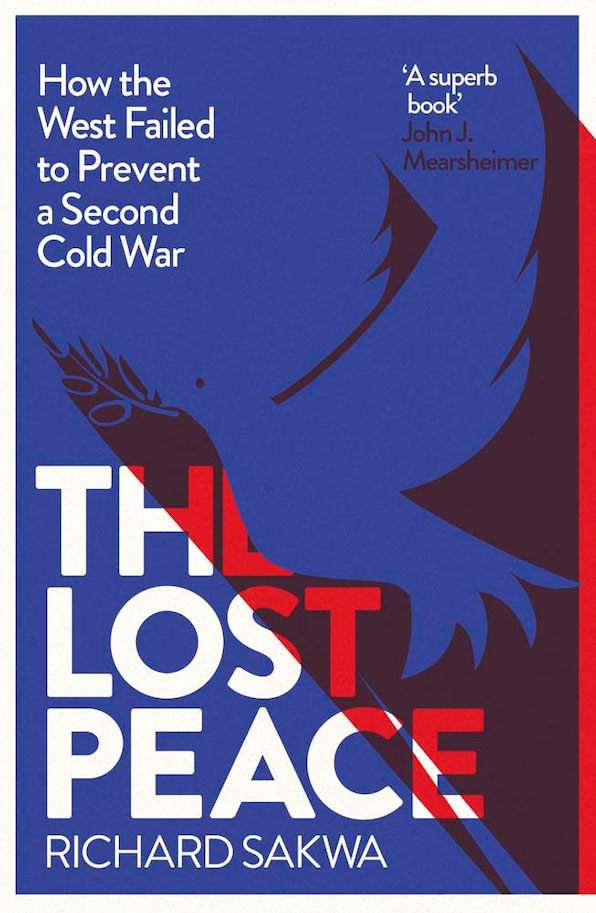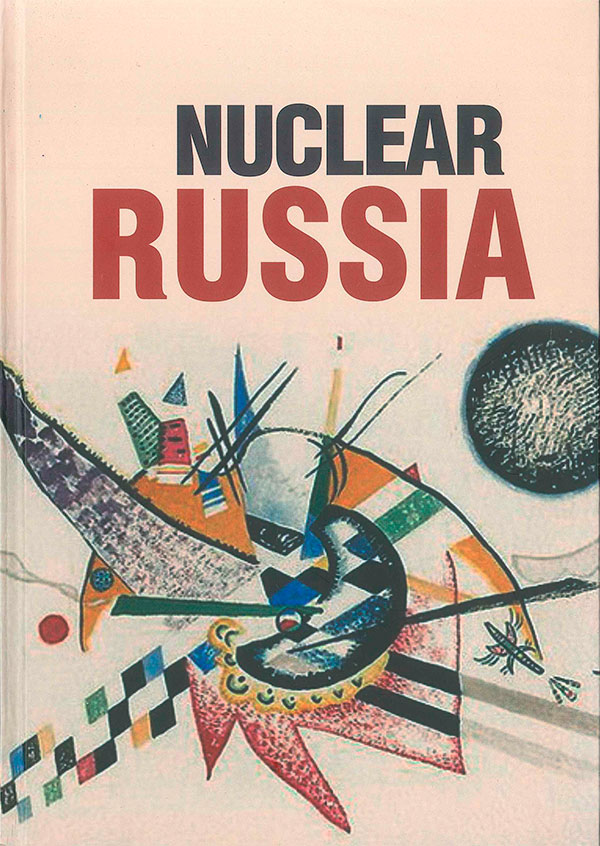Capitalism has always demonstrated an ability to modernize its technological base at the right time. This has been the key to its development. Any heel-dragging has typically been due to a reluctance on the part of the elites to leave the established economic order behind. Still, overcoming the resistance to the inevitable restructuring of industrial relations invariably came with huge casualties and tremendous financial and economic losses. The price for introducing mechanical production (the First Industrial Revolution), for example, was the French Revolution and the Napoleonic Wars. The First World War was preceded by the emergence of mass production (the Second Industrial Revolution). The universal computerization of the economy (the Third Industrial Revolution) took place alongside the collapse of the Soviet Union and socialism as a whole and the dissolution of the Warsaw Pact. It is logical to assume that the coronavirus pandemic is a test of sorts to see if the global community is ready for the next technological transition, which will see the synthesis of physical, digital and biological technologies (the foundations of the Fourth Industrial Revolution). Technological progress is relevant primarily because the global economy has been developing in line with three distinctive trends over the past two decades: the strengthening of corporate capitalism, the growth of protectionism, and the creation of a seemingly new financial architecture. All of these trends have served to deepen the structural imbalances in the global economy. In this respect, the force majeure that is the coronavirus can also be seen as a clear and serious warning: the transition to new technologies will require significant austerity measures, and we must stay the course if we want humankind to survive.
The non-traditional monetary, credit and fiscal policies adopted by the world’s leading economies following the global financial crisis of 2008–2009 have to a certain degree revived business activity around the world. However, their implementation has led to the emergence of what has become known as the “new normal” of near-zero economic growth, the excessive build-up of debt and the unhealthy socialization of private business.
The coronavirus has merely highlighted the need to overhaul the entire system of global economic regulation, which is no mean feat in current conditions given how much it would cost to run a new system. We are talking first of all about the need to deflate the bloated sector of the economy that creates virtual values through the international division of labour and global value chains. The heavy lifting in terms of servicing the increased demands of the financial sector is done by the world’s leading exporters of manufactured goods – China, the United States and Germany, which as a result are now the main advocates of protectionist measures as they try to somehow defend themselves against the unregulated elements of financial globalization.
It is worth noting here that there was a threefold drop in world trade following the Great Depression of 1929–1933, which was only restored after the Second World War. The inability of countries to agree on a new currency regime meant that the recession lasted the better part of two decades. Ultimately, the right of the powerful won out and the United States took it upon itself to steer the global financial system. However, the current dollar-centric financial system is incapable of solving the problem of global imbalances, cutting costs and redirecting inefficient resources to finance the technological transformations that we sorely need.
Coronavirus has, to a certain degree, laid bare the shortcomings of science even when it comes to medicine, that is, to guarantee the life and health of the population (regardless of status or income level). Given the apparent lack of scientific development, it would be absurd, to say the least, to assume that we will be able to successfully combine the biological (i.e., the human) and nanotechnological through robotics and genetic engineering.
What is more, moving the population to large urban agglomerations and implementing work-from-home and distance learning regimes does not solve the main problem – the lack of effective tools for regulating the global economy (primarily in the financial sector). Multi-trillion-dollar investments in science and education are needed if we are ever to make the breakthrough to a new technological mode, but this will not happen as long we are entrenched in the current corporatocratic economic system.
With the global economy slowly sleepwalking into negative returns and depression, weighed down by the growing debt burden and the severance of international economic relations, there is an urgent need for governments to intervene more aggressively in the financial intermediation system at the national and global levels. We should stress that such involvement does not mean the collapse of the market and the end of capitalism. It is, however, absolutely necessary if national economies want to return to stable, balanced, sustainable and inclusive growth once the pandemic is over.
Capitalism has always demonstrated an ability to modernize its technological base at the right time. This has been the key to its development. Any heel-dragging has typically been due to a reluctance on the part of the elites to leave the established economic order behind. Still, overcoming the resistance to the inevitable restructuring of production relations invariably came with huge casualties and tremendous financial and economic losses. The price for introducing mechanical production (the first industrial revolution), for example, was the French Revolution and the Napoleonic Wars. The First World War was preceded by the emergence of mass production (the Second Industrial Revolution). The universal computerization of the economy (the Third Industrial Revolution) took place alongside the collapse of the Soviet Union and socialism as a whole and the dissolution of the Warsaw Pact. It is logical to assume that the coronavirus pandemic is a test of sorts to see if the global community is ready for the next technological transition, which will see the synthesis of physical, digital and biological technologies (the foundations of the Fourth Industrial Revolution). Technological progress is relevant primarily because the global economy has been developing in line with three distinctive trends over the past two decades: the strengthening of corporate capitalism, the growth of protectionism, and the creation of a seemingly new financial architecture. All of these trends have served to deepen the structural imbalances in the global economy. In this respect, the force majeure that is the coronavirus can also be seen as a clear and serious warning: the transition to new technologies will require significant austerity measures, and we must stay the course if we want humankind to survive.
Corporate Capitalism
The liberalization of the world economy that was an integral part of Reaganomics and Thatcherism opened up unlimited opportunities for corporations to explore and conquer the global economic space. According to the United Nations Conference on Trade and Development (UNCTAD), between 1990 and 2018, the assets of multinational corporations grew six times faster than the global GDP, while the number of employees in their foreign branches made up just 2 per cent of the working population of the entire planet. For example, in 2019, the market capitalization of Apple, Microsoft or Amazon exceeded the GDPs of 177 of the 193 UN member countries. Today, each of the world’s 11 biggest transnational banks holds assets that are worth more than the GDP of the Eurasian Economic Union (calculated in market prices).
Corporations have been actively overusing state support in recent decades. It all started with the so-called “Year 2000 Problem” (more commonly known as Y2K), where many believed that the roll-over to a new millennium on January 1, 2000 would result in large-scale computer crashes and, subsequently, shutdowns. Lobbying by major corporations resulted in the United States being forced to spend approximately $150 billion to prevent the problem (ten times the aid package delivered to southern Florida in 1992 following Hurricane Andrew, the most destructive in U.S. history at the time). In the end, the computer crashes that everyone was expecting never happened and the money the government had allocated to businesses to deal with Y2K was spent on shares in internet companies instead. This, in turn, contributed to the further expansion of the dotcom bubble that burst just a few months later.
This notwithstanding, corporations had set a precedent for squeezing money out of the government to help dig them out of their financial ditches. After the global financial crisis of 2008–2009, the practice of extending state support to large privately-owned companies got systemic and absolutely incompatible with the market law. Corporations received huge incentive packages from the government, which resulted in the rapid growth of their financial assets relative to the real sector of the economy. Thus, corporations that have grown on the back of state support have established themselves as competitors for sovereign states in terms of the access to and distribution of global resources. However, instead of investing corporate profits into the transition to new technologies, they kept them frozen in offshore accounts. According to the NGO Tax Justice Network, wealthy people and their families hold up to $32 trillion in hidden financial assets in offshore tax havens. In addition, hundreds of trillions of dollars are “standing idle” in various securities and exotic derivatives. At the same time, the global investment demand for financing infrastructure projects in 2015–2030 is $90 trillion. Ironically, it is tech companies that lead the way in terms of transferring their assets to offshore tax havens.
Protectionism
In 2007, the American economist Dani Rodrik rather gracefully summed up the political trilemma of the global economy – the fact that democracy, national sovereignty and global economic integration (associated with the activities of mega-corporations) are mutually incompatible. Two of the three elements can be combined, but always at the expense of the third. We can assume that the disintegration of the global economy caused by the coronavirus fits into this trilemma.
At the same time, deglobalization processes are nothing new either. The era of protectionism was arguably born in 2005, when the Chinese energy company CNOOC was stymied in its attempts to buy the American oil company UNOCAL. As soon as 2007, the United States Congress passed the Foreign Investment and National Security Act, which significantly tightened the regulation of foreign investment into strategic sectors of the U.S. economy.
Threats to global market freedom started to snowball following the global financial crisis of 2008. The G20 countries adopted 15,631 measures restricting international trade between November 2009 and December 2019, with 20 per cent of these measures being introduced in the second half of 2019 alone. China, the United States and Germany (coincidentally, the world’s top three exporters) lead the way in terms of the number of trade restrictions implemented. We can thus assume that this is how governments respond to the unfair rules of the game that are skewed in favour of global corporations.
We should note here that there has been a noticeable decrease in the global commodities exports and a slowdown in international trade as a whole since 2011, as well as a drop-off in foreign direct investment (FDI) since 2014. For example, the United Kingdom took back $241 billion from foreign economies in 2014–2016, and the United States repatriated $64 billion in FDI in 2018. Taking these repatriated funds into account, U.S. foreign direct investment in 2018 fell by $363 billion compared to the previous year, which is equal to 35 per cent of global FDI.
Preliminary UNCTAD data suggests that global FDI will likely drop by 30–40 per cent in 2020–2021 as a result of the coronavirus. This will primarily affect those countries that have suffered the worst from the epidemic. A number of multinational enterprises (MNEs) in UNCTAD’s Top 100 that help shape overall investments trends have started to reduce capital expenditures in the affected regions. The world’s 5000 leading MNEs, which together account for the bulk of global FDI, estimate that profits will shrink by 30 per cent on average as a result of COVID-19. The energy and basic materials industries will be hit the hardest (−208 per cent, taking the shock from the drop in oil prices into account), followed by aviation (−116 per cent) and the automotive industry (−47 per cent).
According to preliminary estimates offered by The Economist, U.S. and European GDP could drop by as much as 5–10 per cent as a result of the coronavirus. President of the United States, Donald Trump, greenlit a relief package worth $2 trillion, which is 10 per cent of the country's GDP and twice the amount earmarked during the crisis of 2007–2009. The credit guarantees announced by the United Kingdom, France and other countries make up 15 per cent of their GDPs. Central banks are printing money to buy distressed corporate assets that are rapidly losing their market value. The governments of the world’s leading economies are trying to place temporary bans on filing for bankruptcy and are considering the possibility of the large large-scale nationalization of backbone companies in the private sector. However, these are short-term fixes that are often used in times of crisis and, as such, they typically do not pave the way for fundamental changes to be made to the global economic model in order to make the transition to a new technological mode.
Financial System Reform
A fatal flaw of the global economic system as it stands today is that it operates within the financialization paradigm, that is, it isolates financial flows from real production. Financialization comes in three forms: 1) the separation of financial flows from market conditions, which allows bankers to earn money both in times of recession and during booms; 2) the deformation of demand for money as a result of the separation of financial capital from the financing of real production processes and even stock market operations; 3) the elimination of the role of the state as a regulator of credit relations, which manifests itself in the actual removal of central banks from the process of creating money. For example, over 97 per cent of the money that people and businesses use today exists in the form of bank deposits in commercial banks. And actual physical cash printed by central banks makes up less than 3 per cent of the money used today in the global economy. As we know, it was commercial banks who ushered in the global financial crisis by creating credit money through short-term deposits.
The problem with the global financial system is that, no matter how much money is created, there will never be enough to fulfil current financial obligations, since the credit nature of money today prevents it from final consumption, which is not the case with regular goods. All newly created money is, by definition, a debt obligation, the repayment of which requires the creation of new money. This is why the real sector of the economy constantly faces a monetary deficit in the existing financial system. As a consequence, the entire global production chain is exposed to the permanent risk of destabilization should we suddenly stop generating money.
The conflict between manufacturers (owners of ideas) and the owners of financial capital (consumers) has existed since the gold standard was introduced and lies in the fact that the former try to sell their products as quickly as possible, while the latter strive to hold onto their financial capital as long as possible, the accumulation (rather than spending) of which is considered a special value (fetish). In the West, they have been looking for a solution to this conflict between the manufacturing and non-manufacturing classes for over 100 years now. For example, in Germany, the merchant and financial reformer Silvio Gesell proposed a tax on banknote ownership that would see banknotes lose their nominal value throughout the year. Gesell believed that an optimal monetary system should ensure constant demand in the economy and not depend on the stock market and the unpredictable moods of bankers and owners of capital. In such a system, the number of purchases by each individual should be consistent with the number of sales made. Money owners should, therefore, feel pressure to get rid of their money, and thus put it back into circulation, as quickly as possible. This way money would lose the unfair advantage that it has over goods – the fact that money is "eternal" and, unlike goods, it does not lose its value over time due to transportation, storage and maintenance costs and to normal depreciation. Gesell called his system “free money” that would help usher in a “natural economic order.”
Gesell believed that the state should be solely responsible for regulating how much money is in circulation at any given time. A number of possible methods for returning full control over the circulation of money to the state are currently under discussion in the homeland of the central bank, the United Kingdom. For example, former Governor of the Bank of England Sir Mervyn King proposed a full reform of the banking system that would prevent private financial intermediaries from being able to create credit money by dividing them into two categories – narrow banks and wide banks. The first category includes traditional banks, which would henceforth provide account holders with 100-per cent reserves in the state’s central bank in the form of highly liquid securities. This category of banks makes money through payment services only. With 100 per cent reserves, the government is thus able to finance its expenses at a zero-interest rate and does not have to resort to expensive loans. Accordingly, the issuance of risky loans would be transferred to the competencies of the second category of financial intermediary, which includes various non-banking financial institutions. Wide banks would not have the right to accept demand or short-term deposits and would finance their activities exclusively through the issuance of shares and debt instruments.
The creators of the sovereign money project have proposed changes to the current financial system that are even more radical than those put forward by King. According to the sovereign money system, the right to create all money in circulation (including both cash and credit money) belongs exclusively to the central bank, and is extended to the balances of commercial banks, which forever lose the right to use customer deposits to create money themselves. Thus, the Central Bank is able to regulate activity not by changing interest rates, but by directly controlling the rate at which new money enters the economy.
The idea of sovereign money was developed throughout the 20th century in the works of such famous English and American thinkers as Frederick Soddy, Frank Knight, Henry Simons, Irving Fisher, Milton Friedman, James Tobin, Hyman Minsky, John Kay and Laurence Kotlikoff. The project received renewed attention in 2012, when economists at the International Monetary Fund tested Irving Fisher’s initial “sovereign money” model on U.S. economic indicators, which firmly validate the claimed positive effects and benefits of the model.
Conclusion
The non-traditional monetary, credit and fiscal policies adopted by the world's leading economies following the global financial crisis of 2008–2009 have, to a certain degree, revived business activity around the world. However, their implementation has led to the emergence of what has become known as the “new normal” of near-zero economic growth, the excessive build-up of debt and the unhealthy socialization of private business.
The coronavirus has merely highlighted the need to overhaul the entire system of global economic regulation, which is no mean feat in current conditions given how much it would cost to run a new system. We are talking first of all about the need to deflate the bloated sector of the economy that creates virtual values through the international division of labour and global value chains. The heavy lifting in terms of servicing the increased demands of the financial sector is done by the world’s leading exporters of manufactured goods – China, the United States and Germany, which as a result are now the main advocates of protectionist measures as they try to somehow defend themselves against the unregulated elements of financial globalization.
It is worth noting here that there was a threefold drop in world trade following the Great Depression of 1929–1933, which was only restored after the Second World War. The inability of countries to agree on a new currency regime meant that the recession lasted the better part of two decades. Ultimately, the right of the powerful won out, and the United States took it upon itself to steer the global financial system. However, the current dollar-centric financial system is incapable of solving the problem of global imbalances, cutting costs and redirecting inefficient resources to finance the technological transformations that we sorely need.
Coronavirus has, to a certain degree, laid bare the shortcomings of science when it comes to medicine, that is, to guarantee the life and health of the population (regardless of status or income level). Given the apparent lack of scientific development, it would be absurd, to say the least, to assume that we will be able to successfully combine the biological (i.e., the human) and nanotechnological through robotics and genetic engineering.
What is more, moving the population to large urban agglomerations and implementing work-from-home and distance learning regimes does not solve the main problem – the lack of effective tools for regulating the global economy (primarily in the financial sector). Multi-trillion-dollar investments in science and education are needed if we are ever to make the breakthrough to a new technological mode, but this will not happen as long we are entrenched in the current corporatocratic economic system.
With the global economy slowly sleepwalking into negative returns and depression, weighed down by the growing debt burden and the severance of international economic relations, there is an urgent need for more active government intervention in the financial intermediation system at the national and global levels. We should stress that such involvement does not mean the collapse of the market and the end of capitalism. It is, however, absolutely necessary if national economies want to return to stable, balanced, sustainable and inclusive growth once the pandemic is over.








